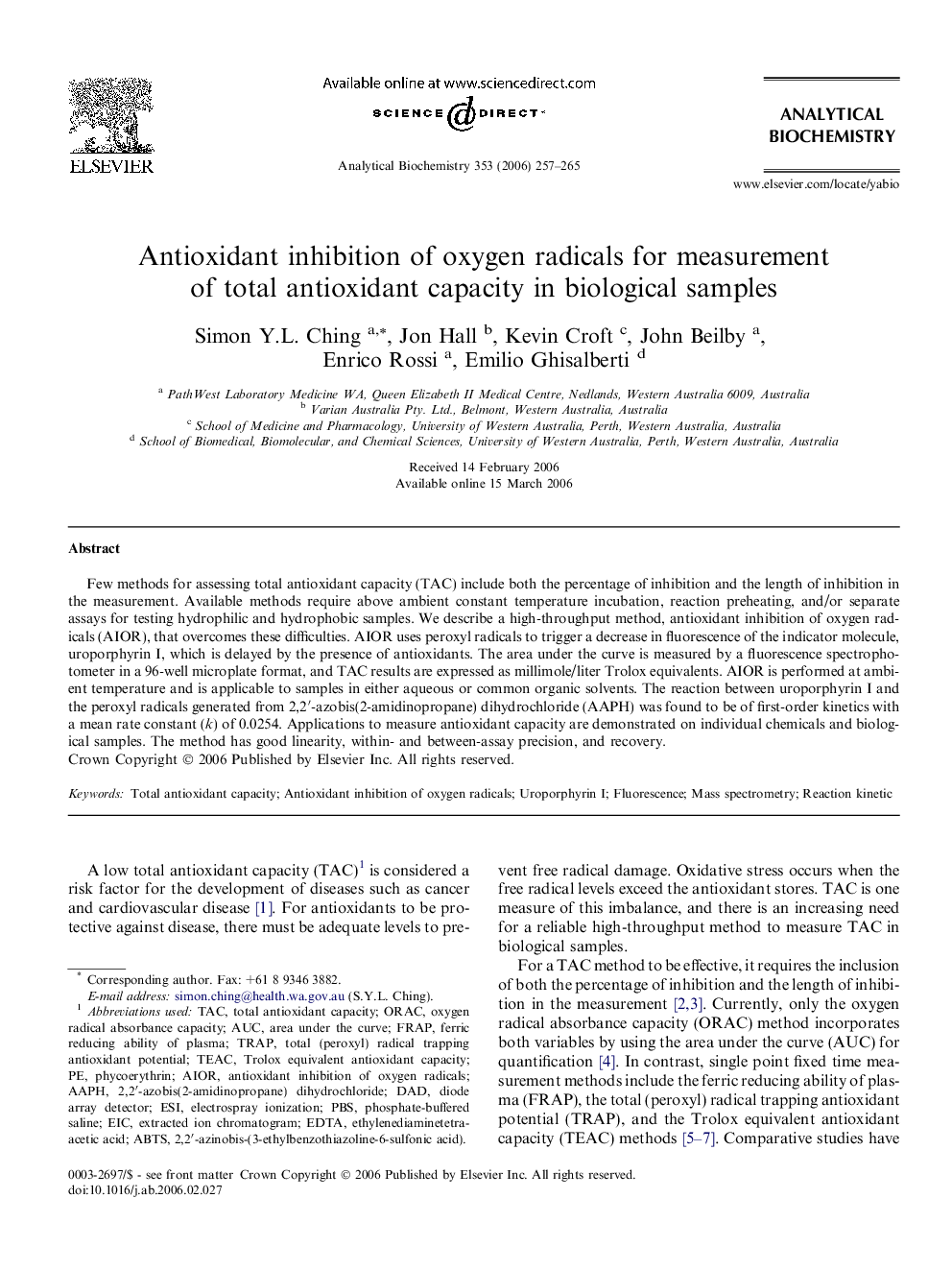| Article ID | Journal | Published Year | Pages | File Type |
|---|---|---|---|---|
| 1177543 | Analytical Biochemistry | 2006 | 9 Pages |
Few methods for assessing total antioxidant capacity (TAC) include both the percentage of inhibition and the length of inhibition in the measurement. Available methods require above ambient constant temperature incubation, reaction preheating, and/or separate assays for testing hydrophilic and hydrophobic samples. We describe a high-throughput method, antioxidant inhibition of oxygen radicals (AIOR), that overcomes these difficulties. AIOR uses peroxyl radicals to trigger a decrease in fluorescence of the indicator molecule, uroporphyrin I, which is delayed by the presence of antioxidants. The area under the curve is measured by a fluorescence spectrophotometer in a 96-well microplate format, and TAC results are expressed as millimole/liter Trolox equivalents. AIOR is performed at ambient temperature and is applicable to samples in either aqueous or common organic solvents. The reaction between uroporphyrin I and the peroxyl radicals generated from 2,2′-azobis(2-amidinopropane) dihydrochloride (AAPH) was found to be of first-order kinetics with a mean rate constant (k) of 0.0254. Applications to measure antioxidant capacity are demonstrated on individual chemicals and biological samples. The method has good linearity, within- and between-assay precision, and recovery.
